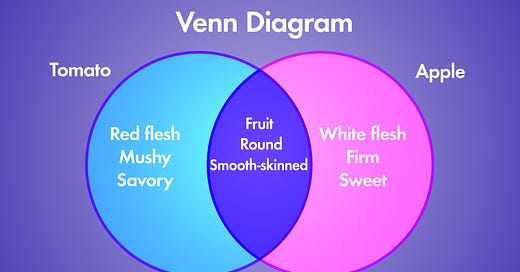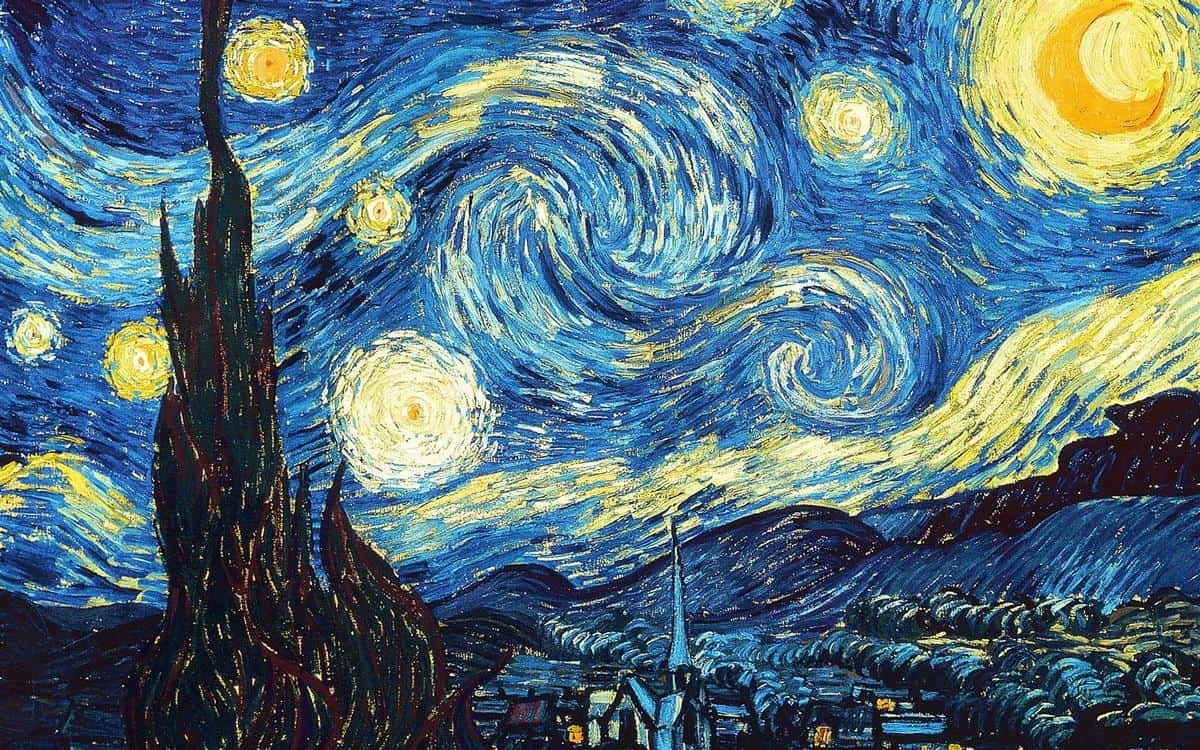BIG Brain KidLokSe- Solving with Venn Diagrams
I DON'T like cake! Symbolic Logic Part 2 + practice problems
Ahoy, KidLokers!
If you’re reading this, you either were hooked on my first post on symbologies, or you were attracted by the title and still didn’t get the joke. If you want to know, I suggest reading it here! Otherwise, let’s get right on to truth values.
Kurma Chapter- Truth Values, Inferences, and Venn Diagrams
I don’t like cake!
Well, fear not, cake-hater! Symbolic logic has a place for you here! And not just for the cake, either! Any statement can be correct, or not correct- in logical terms, True or False! There’s no grey area here; you can’t say "I only like cake sometimes when it’s my birthday” or something vague.
Every statement has an OPPOSITE- meaning that you can always NEGATE a statement. Can you figure out the negation of these statements?
(a) My sister is smart
(b) All swans are white
(c) My leg isn’t broken
Now, answer time!
(a) My sister is not smart: This is pretty straightforward.
(b) Some swans are white: This is a less well-known concept. The opposite of ALL is “some”- not NONE
(c) My leg IS broken: A double negation is a positive- like how a double subtraction is an addition.
Wasn’t (b) a little bit tricky? Remember, there are THREE ways to describe something in generality- All, some, and none. It’s very important to know which is the opposite of which.
Statement: All swans are white; Negation: Some swans are white
Statement: No swans are white; Negation: Some swans are white
This idea helps us construct the first method of Symbolic Logic, Venn Diagrams.
Inference + solved example
If certain statements are given, we should be able to determine or prove something out of them. The given statements are called premises, while what we have to prove is called our conclusion. Let’s take a few statements and see whether we can figure out whether we can conclude something.
All artists are creative
Arthur is an artist
Betty is creative
Chloe isn’t an artist
Dave isn’t creative
First, we observe that we have 5 statements (what’s a statement?). Now, we need to “mix n’ match” to see what we can prove using our premises.
Let’s look at premises 1 and 2. Since Arthur is an artist, it logically follows that he MUST be creative. Remember, there are no exceptions and no grey areas. So, we have created a new statement:
Arthur is creative
Now, let’s see premise 3 and apply premise 1 to it. We know all artists are creative, and we know Betty is creative. You might say, “oh, of course, Betty is an artist then!”. Think again, even if Betty is creative, does it mean she HAS to be an artist? No! She doesn’t necessarily need to be an artist to be creative- she could be creative in other ways! Remember, the premise is only “All artists are creative”- not “All people who are creative are artists”. So, we cannot conclude anything about Betty.
Looking at our methods again, can you conclude anything from Chloe and Dave? Remember, always read the premises and don’t assume anything (be cautious like in premises 1 and 3).
Done?
Here are the answers! Don’t worry if you don’t get them right, we will explain the answer in Venn Diagrams.
We cannot conclude anything about Chloe
Dave isn’t an artist
Before moving on to our first method of practicing symbolic logic, review what you’ve just done. Easy? Probably. But now the difficulty will ramp up!
Venn Diagrams- Method A of using Symbolic Logic
Dun dun dun! You’ve arrived at Level 6, Venn Diagrams! You definitely would’ve heard of this before, but here’s a short background if you want one. Let’s get right into it, using our example from our previous section!
All artists are creative
Arthur is an artist
Betty is creative
Chloe isn’t an artist
Dave isn’t creative
Instead of trying to think it through with our brains, let’s use our art capabilities and draw it out using a Logic Chart (alternate name for Venn Diagram). Here are the steps:
Draw a circle, representing the group of “creative people” (Premise 1)
Draw another circle, INSIDE ‘Creative People”. This is because ALL artists are creative, meaning the circle representing artists must be wholly inside Creative People. The “Artist” circle is shaded green and yellow, to signify that it is inside “Creative People” but also its own category. (Premise 1)
Mark the point in the category/categories that Arthur would fall in. (Premise 2). We can see that Arthur is inside “Artists”, and also inside “Creative People”! Therefore, we get our answer.
6. Arthur is creative
Do the same for the rest. Note that Betty and Chloe have two distinct possible placements, so we cannot conclude anything solid about either both of them. Since Dave is outside “Creative People”, he is NOT an artist as well.
Therefore, we get our answers:
6. Arthur is an artist
7. Dave isn’t creative
A little too much? Well, it seems that way when explaining. Don’t worry and don’t memorize! This is what logic is all about- you use your common sense to figure something out. Read back again through how we did it. Did we apply a complex formula? Did we do something that looked ridiculous? No! In fact, you could’ve done this by yourself! If you are still not feeling it, we have many many MANY more ways to approach Symbolic Logic. But for everyone, here’s another practice problem that I will give the answers to in my next post! Comment down your answers before then! Sayonara, from KidLokSe!
Premises:
All racing cars are fast
No trains are racing cars
Lightning McQueen is a racing car
Thomas is a train
Finn McMissile is fast
Dora is not fast
Bob the Builder isn’t a racing car
Scooby Doo uses a racing car








